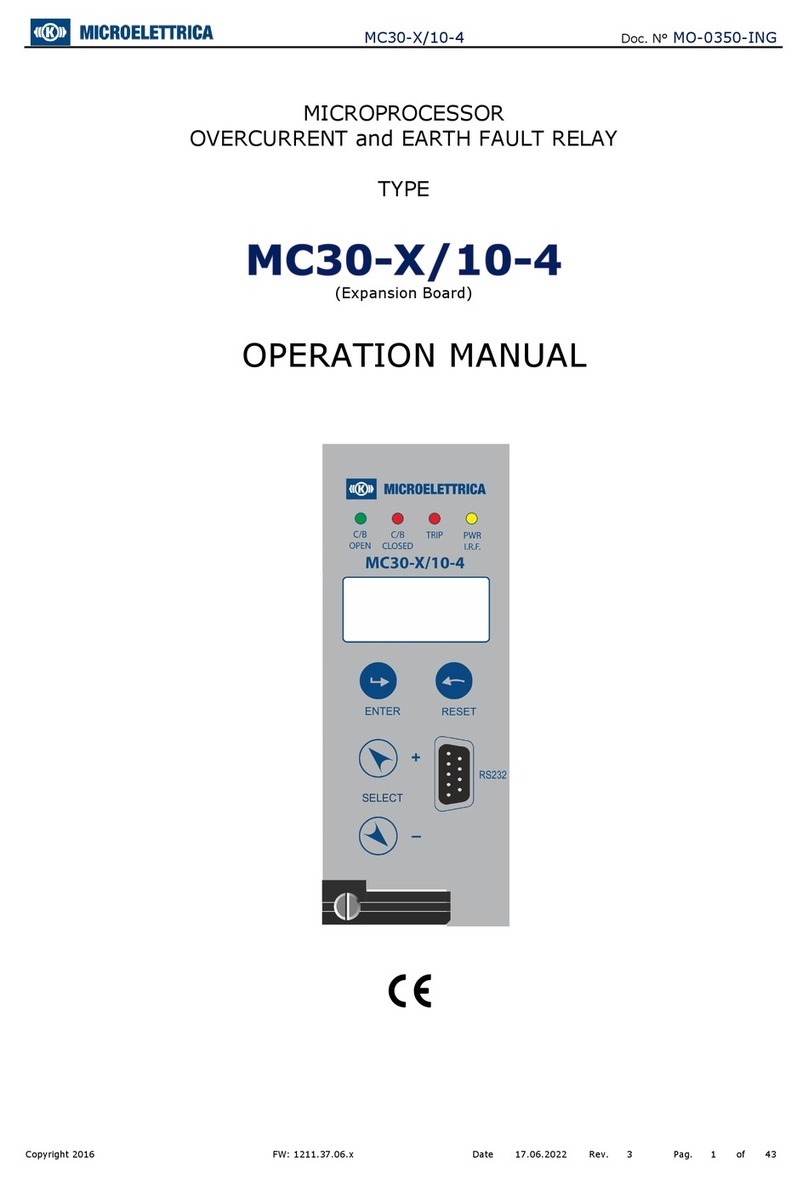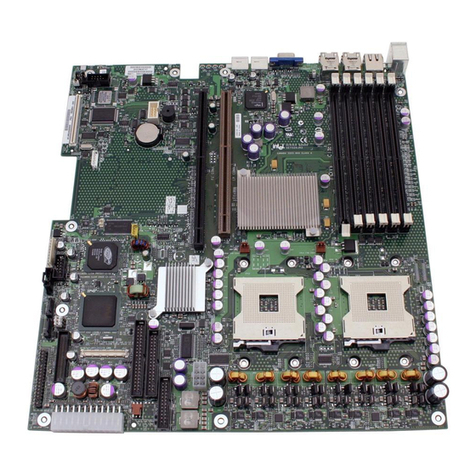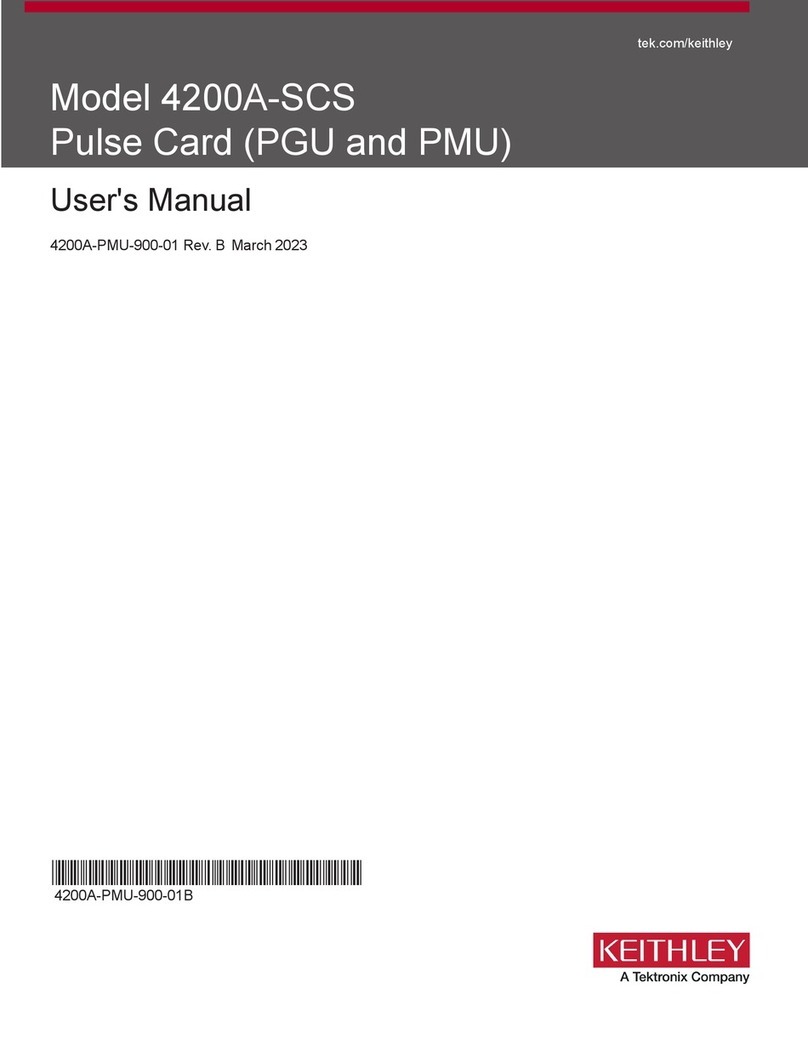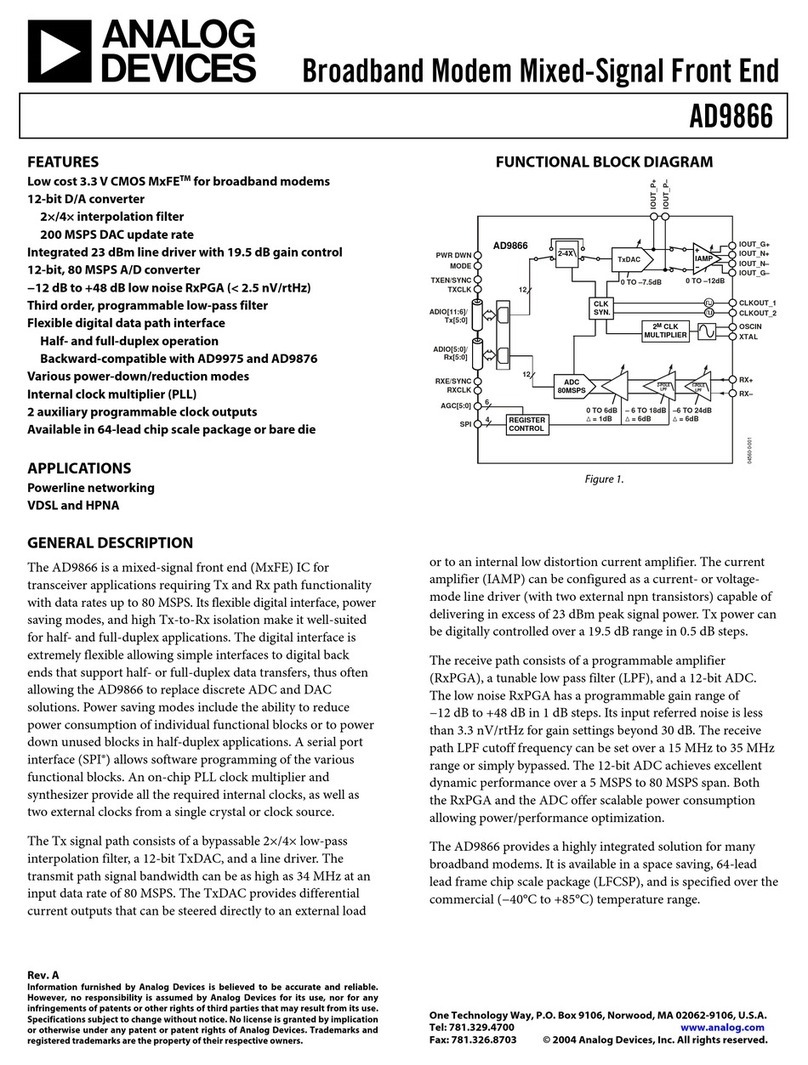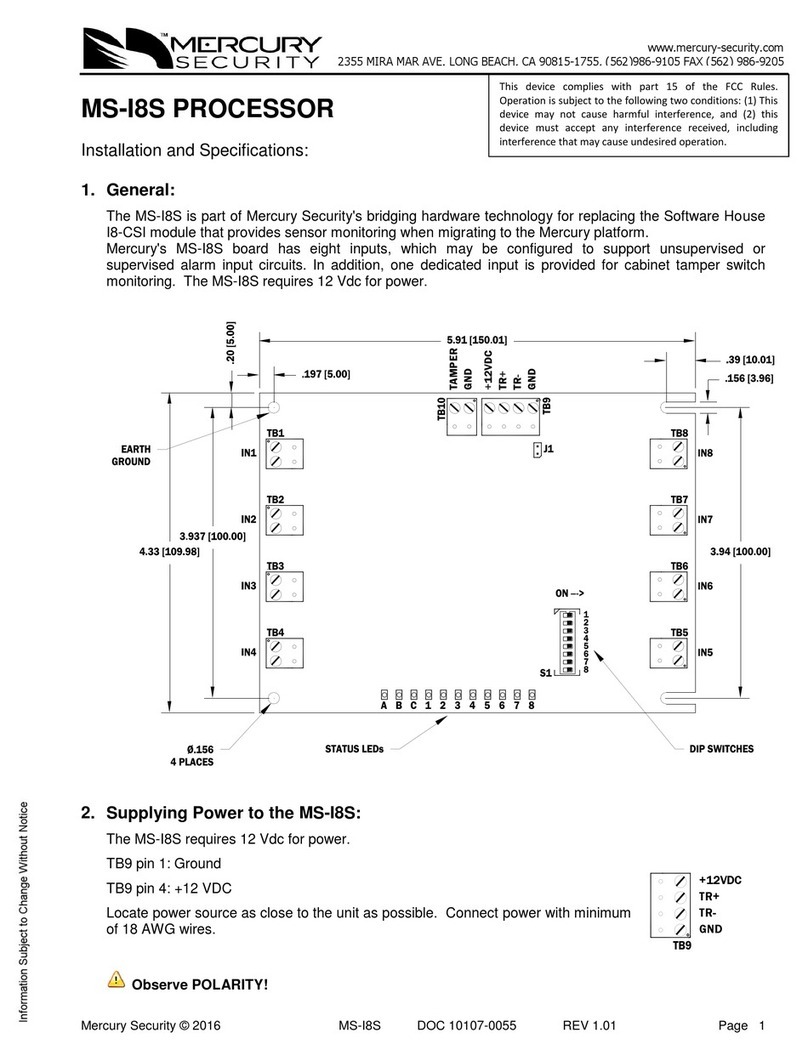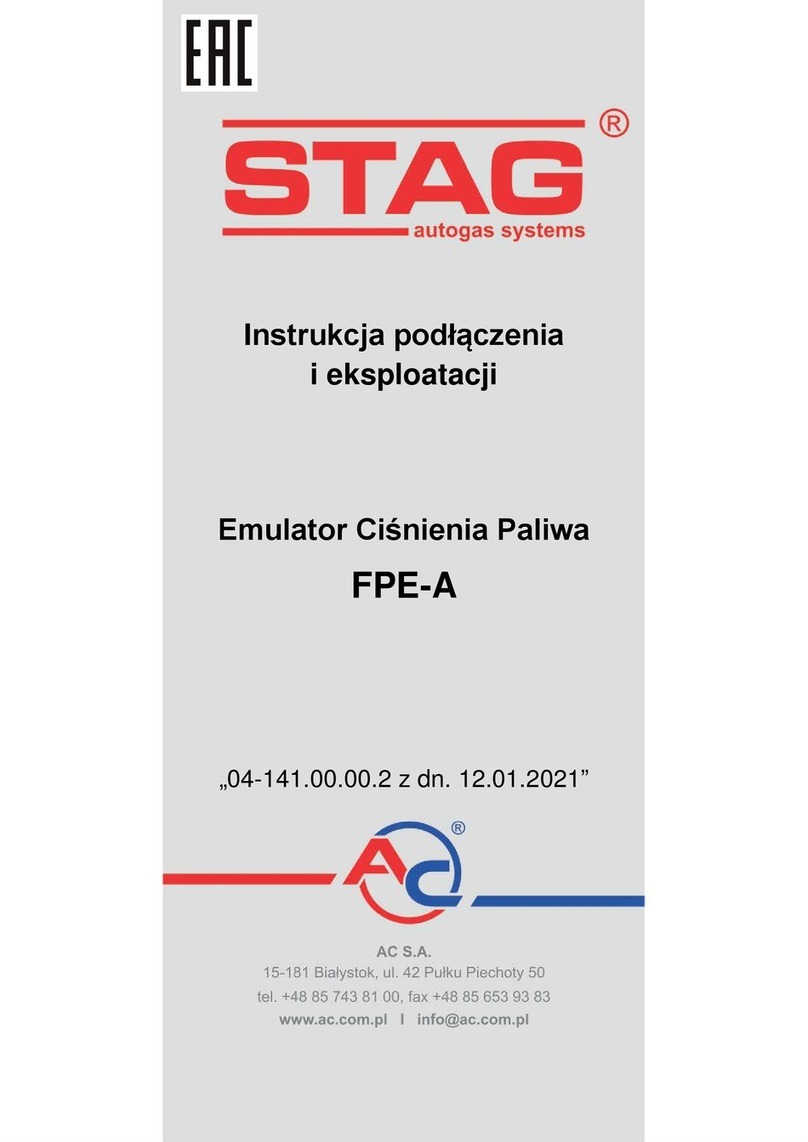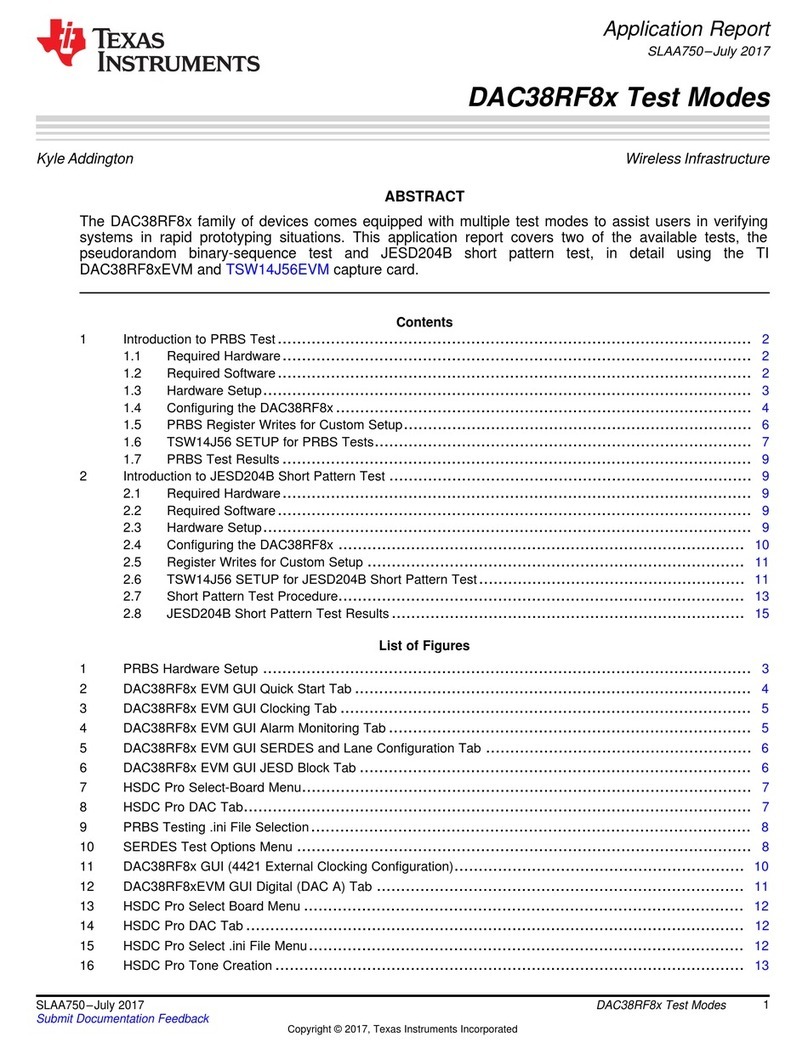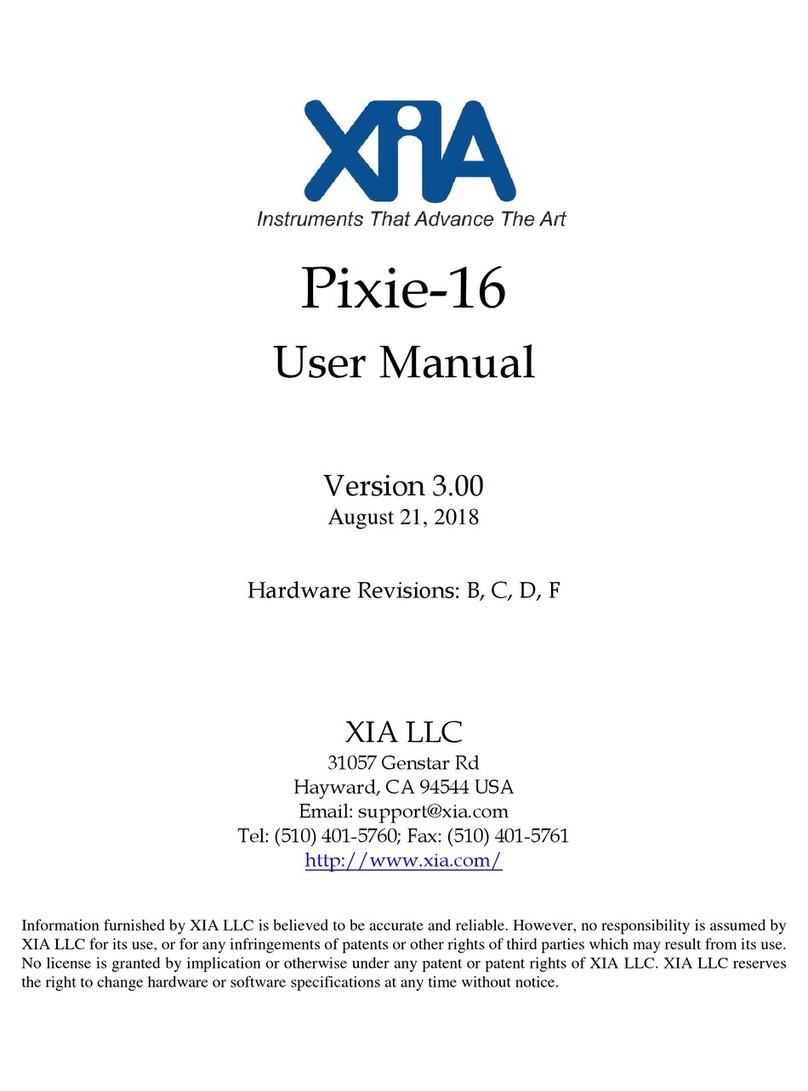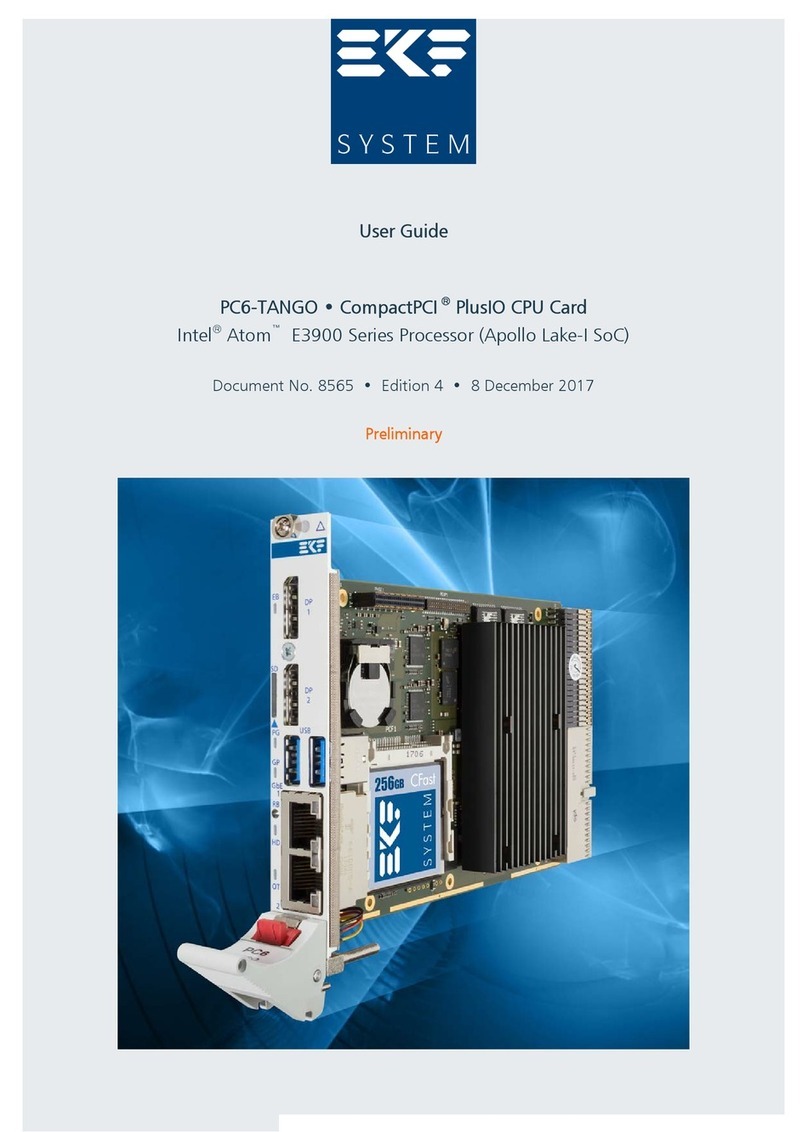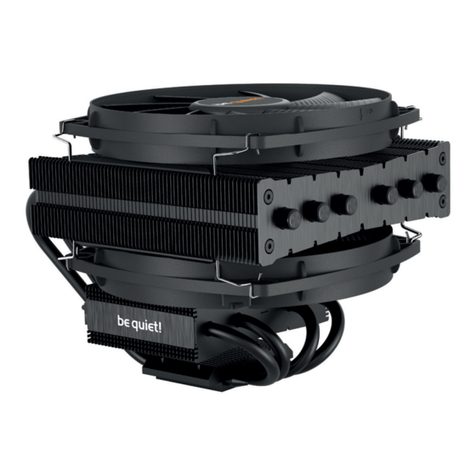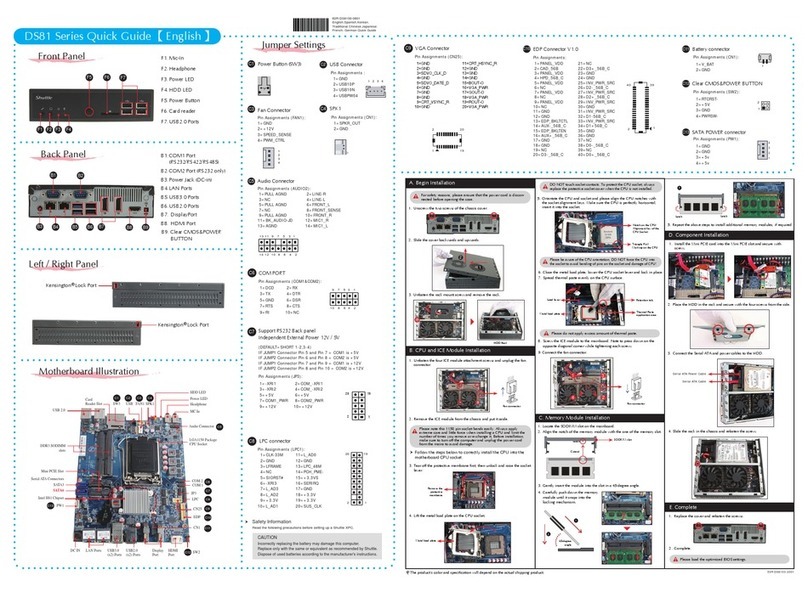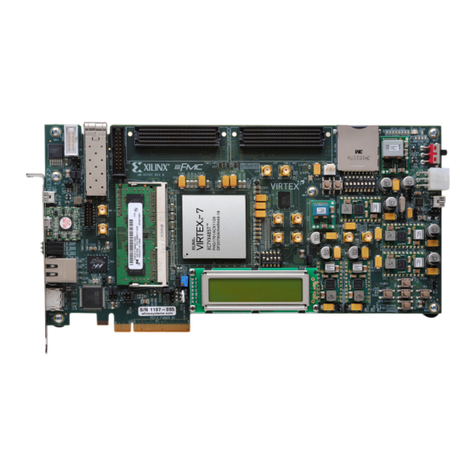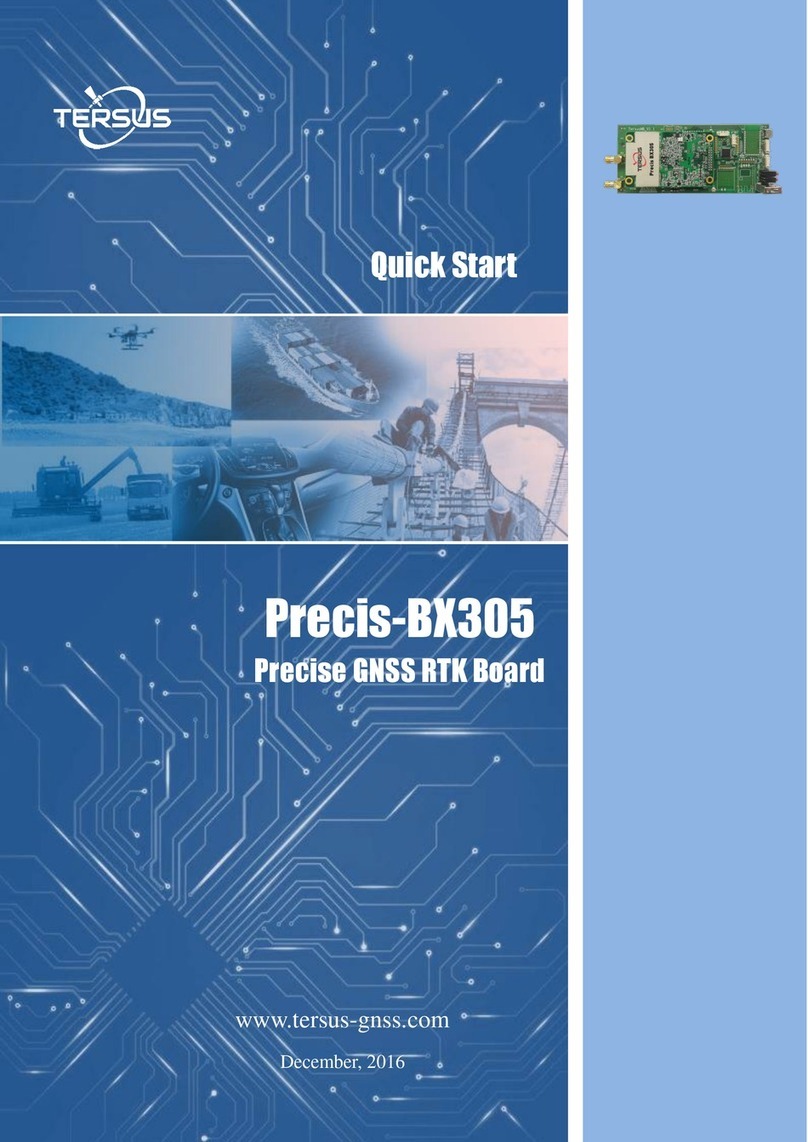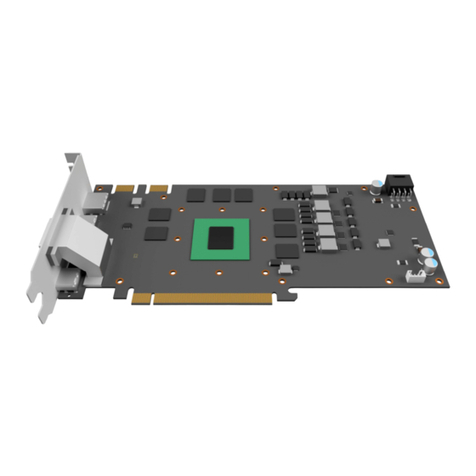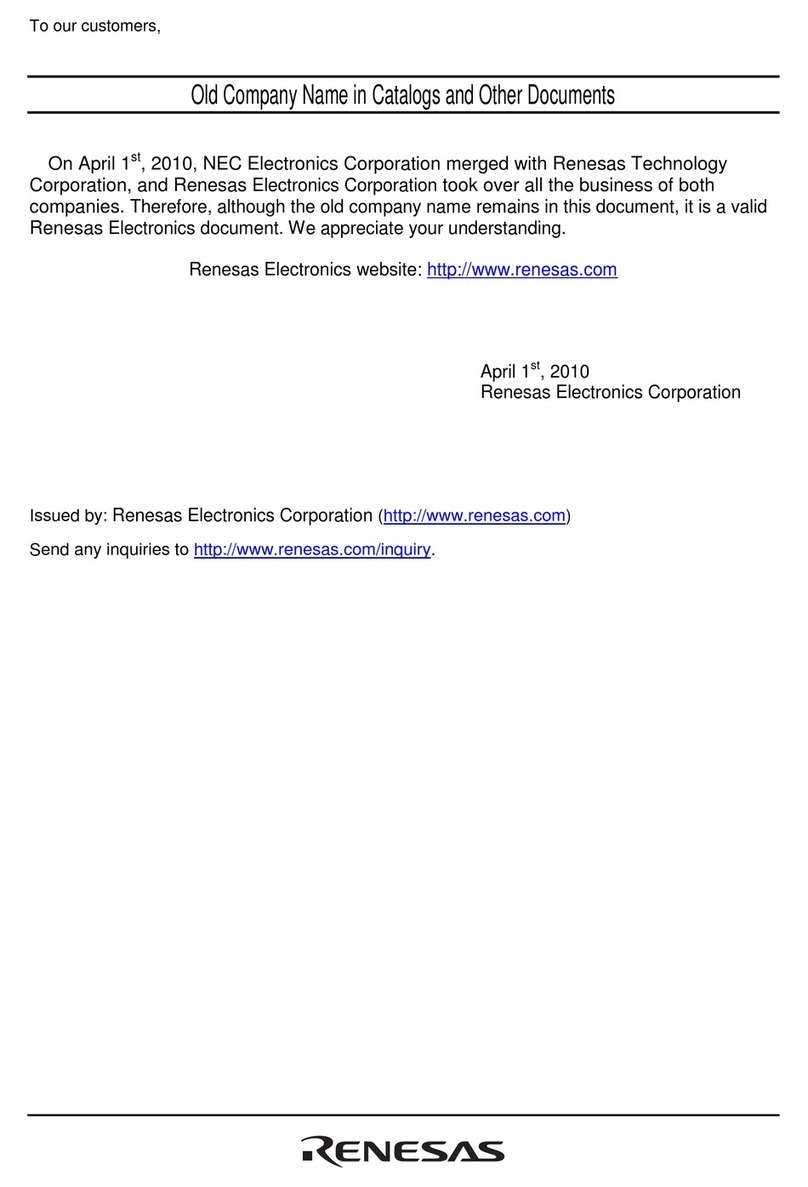MicroElektronika Mikromedia User manual

Compact multimedia development system rich with on-board peripherals for
all-round development on LM3S9B95 device
for Stellaris®M3
mikromedia™

Page 2
I want to express my thanks to you for being interested in our products and for having
condence in MikroElektronika.
The primary aim of our company is to design and produce high quality electronic products
and to constantly improve the performance thereof in order to better suit your needs.
The Stellaris®, ARM® and Windows® logos and product names are trademarks of Texas Instruments®, ARM® Holdings and Microsoft® in the U.S.A. and other countries.
TO OUR VALUED CUSTOMERS
Nebojsa Matic
General Manager

Introduction to mikromedia for Stellaris® M3 4
Package Contains 5
Key Features 6
System Specication 7
1. Power supply 8
USB power supply 8
Battery power supply 8
2. LM3S9B95 microcontroller 10
Key microcontroller features 10
3. Programming the microcontroller 11
Programming with mikroBootloader 12
step 1 – Connecting mikromedia 12
step 2 – Browsing for .HEX le 13
step 3 – Selecting .HEX le 13
step 4 – Uploading .HEX le 14
step 5 – Finish upload 15
Programming with mikroProg™programmer 16
4. Reset Button 18
5. Crystal Oscillator 20
6. MicroSD Card Slot 21
7. Touch Screen 22
8. Audio Module 24
9. USB connection 26
10. Accelerometer 28
11. Flash Memory 29
12. Pads 30
13. Pinout 31
14. Dimensions 32
15. Mikromedia Accessories 33
16. What’s Next? 34
Page 3
Table of Contents

Page 4
The mikromedia for Stellaris®M3 is a compact
development system with lots of on-board peripherals
which allow development of devices with multimedia
contents. The central part of the system is a 32-bit
ARM®Cortex™-M3 LM3S9B95 microcontroller. The
mikromedia for Stellaris® M3 features integrated
modules such as stereo MP3 codec, TFT 320x240
touch screen display, accelerometer, MMC/SD card
slot, 8 Mbit ash memory, battery charger. The
board also contains MINI-B USB connector, two 1x26
connection pads and other. It comes pre-programmed
with USB HID bootloader, but can also be programmed
with external programmers, such as mikroProg™ for
Stellaris®or JTAG programmer. Mikromedia is compact
and slim, and perfectly ts in the palm of your hand,
which makes it a convenient platform for mobile
devices.
Introduction to mikromedia for Stellaris®M3

Page 5
01 02
04 05
03
06
Damage resistant
protective box
mikromedia for Stellaris® M3
development system
mikromedia for Stellaris® M3
user’s guide
mikromedia for Stellaris® M3
schematic
DVD with documentation
and examples
USB cable
Package Contains
Copyright ©2011 Mikroelektronika.
Allrights reserved.Mikroelektronika,Mikroelektronika logo and other
Mikroelektronikatrademarks arethe propertyof Mikroelektronika.
Allother trademarksare theproperty of their respectiveowners.
Unauthorized copying, hiring, renting, public performance and
broadcasting of this DVD prohibited.
20122011
www.mikroe.com

Page 6
Page 7
01
02
10
Key Features
16
01
02
03
04
05
06
07
08
09
10
11
12
13
14
15
Connection Pads
TFT 320x240 display
USB MINI-B connector
Charge indication LED
LI-Polymer battery connector
3.5mm headphone connector
Power supply regulator
Serial Flash memory
VS1053 Stereo mp3 coder/decoder
RESET button
Stellaris®ARM®Cortex™-M3 LM3S9B95
Accelerometer
Crystal oscillator
microSD Card Slot
Power indication LED
JTAG/SWD programmer connector

Page 6
Page 7
System Specication
power supply
Via USB cable (5V DC)
board dimensions
81.2 x 60.5 mm (3.19 x 2.38 inch)
weight
~45 g (0.10 lbs)
power consumption
77 mA with erased MCU
(when on-board modules are inactive)
03
06
07
08
09
11
12
13
14
15
04 05
16

Page 8
Page 9
1. Power supply
You can apply power supply to the board
using MINI-B USB cable provided with
the board. On-board voltage regulators
provide the appropriate voltage levels
to each component on the board. Power
LED (GREEN) will indicate the presence of
power supply.
You can also power the board using Li-Polymer battery,
via on-board battery connector. On-board battery charger
circuit MCP73832 enables you to charge the battery
over USB connection. LED diode (RED) will indicate
when battery is charging. Charging current is ~250mA
and charging voltage is 4.2V DC.
Battery power supply
USB power supply
Figure 1-1: Connecting
USB power supply
Figure 1-2: Connecting Li-Polymer battery

Page 8
Page 9
VCC-1.8VREF-1.8
E11
10uF
FP3
FERRITE
VCC-3.3
AVCC
FP4
FERRITE
C25
100nF
VCC-SYS VCC-3.3
E3
10uF
E4
10uF
R26
2K2
VCC-BAT
R44
3K9
Charging Current approx. 250mA
R39
4K7
VCC-3.3
E7 10uF C40
2.2uF
R34
4K7
R6
4K7
VCC-BAT
VSENSE
VCC-SYS
R37
10K
R36
10K
VCC-3.3
STAT
R38
10K
R45
1K
VCC-3.3
E5
10uF
R35
10K
VCC-3.3
C29
2.2uF
VCC-3.3
R46
22K
E10
10uF
R47
120K
VCC-1.8
VCC-1.8
R50
12K1
1
2
3
5
4
Vin
GND
EN ADJ
Vout
U3
AP7331-ADJ
R49
4K7
3
1
2
GND
Vin
Vout
REG1
LD29080DT33
VCC-BAT
LD1
GREEN
LD2
RED
1
2
CN1
BATT CONN
2
3
5
4
1STAT
VSS
VBAT VDD
PROG
U5
MCP73832
Q4
BC846
Q5
BC846
D1
PMEG3010ER
VCC-SYSVCC-BAT
VCC-USB
R43
10K
M1
DMP2160UW
DATA BUS
1
2
3
4
5
6
7
8
9
10
11
12
13
14
15
16
17
18
19
20
21
22
23
24
25
26
HDR1
M1X26
HDR2
M1X26
VCC-3.3 VCC-3.3
VCC-SYS
VCC-USB
C28
10nF
FP2
FERRITE 1
2
3
4
5GND
ID
D+
D-
VBUS
CN3
USB MINIB
27
28
29
30
31
32
33
34
35
36
37
38
39
40
41
42
43
44
45
46
47
48
49
50
51
52
Figure 1-3: Power supply schematics

Page 10
Page 11
The mikromedia for Stellaris® M3 development board comes
with the ARM®Cortex™-M3 LM3S9B95 microcontroller. This
high-performance 32-bit microcontroller with its integrated
modules and in combination with other on-board modules is
ideal for multimedia applications.
Key microcontroller features
- Up to 100 DMIPS Operation;
- 32-bit architecture;
- 256KB of Flash memory;
- 96KB of SRAM memory;
- 65 I/O pins;
- 32kHz RTCC;
- IEEE 1588
- Ethernet, UART, SPI, I2C, CAN, ADC etc.
ROM
JTAG
DMA
GPIOs
USB OTG
SSI
CAN
PWM QEI
ADC
FLASH
SRAM
UART
I2S
I2C
ETHERNET
MAC/PHY
SYSTEM
CONTROL
AND
CLOCKS
WATCHDOG
TIMERS
GENERAL
PURPOSE
TIMERS
EXTERNAL
PERIPHERIAL
INTERFACE
ANALOG
COMPARATORS
ADVANCED PERFORMANCE BUS
ADVANCED HIGH PERFORMANCE BUS
APB
AHB
2. LM3S9BB95 microcontroller

Page 10
Page 11
01
02
Over USB mikroBootloader
Using external mikroProg™or JTAG programmer
Figure 3-1:
LM3S9B95
ARM®Cortex™-M3
Microcontroller
The microcontroller can be programmed in two ways:
3. Programming the microcontroller

Page 12
Page 13
You can program the microcontroller with bootloader which is pre
programmed into the device by default. To transfer .HEX le from
a PC to MCU you need bootloader software (mikroBootloader
USB HID) which can be downloaded from:
After software is downloaded unzip it to desired location and
start mikroBootloader USB HID software.
http://www.mikroe.com/eng/downloads/get/1752/
mikrobootloader_lm3s9b95_v200.zip
01
02
Programming with mikroBootloader
Figure 3-2: USB HID mikroBootloader window
step 1 – Connecting mikromedia
01 To start, connect the USB cable, or if already connected
press the Reset button on your mikromedia board. Click the
”Connect” button within 5s to enter the bootloader mode,
otherwise existing microcontroller program will execute.

Page 12
Page 13
01
01
02
step 3 – Selecting .HEX le step 2 – Browsing for .HEX le
Figure 3-3: Browse for HEX Figure 3-4: Selecting HEX
01 01
02
Click the ”Browse for HEX” button and from a
pop-up window (Figure 3.4) choose the .HEX le
which will be uploaded to MCU memory.
Select .HEX le using open dialog window.
Click the ”Open” button.
01

Page 14
Page 15
01
01
step 4 – Uploading .HEX le
Figure 3-5: Begin uploading Figure 3-6: Progress bar
01 01
To start .HEX le bootloading click the
”Begin uploading” button.
You can monitor .HEX le uploading via progress bar

Page 14
Page 15
01
step 5 – Finish upload
Figure 3-7: Restarting MCU Figure 3-8: mikroBootloader ready for next job
01 Click the ”OK” button after uploading is nished and
wait for 5 seconds. Board will automatically reset
and your new program will execute.
01

Page 16
Page 17
The microcontroller can be programmed
with external mikroProg™programmer
and mikroProg™for Stellaris®software.
The external programmer is connected to
the developmentsystemviaJTAGconnector,
Figure 3-9. mikroProg™is a fast USB 2.0
programmer with hardware Debugger
support. It supports ARM®Cortex™-M3 and
Cortex™-M4 microcontrollers from Stellaris®.
Outstanding performance, easy operation
and elegant design are it’s key features.
Figure 3-9:
mikroProg™JTAG
connector
Programming with mikroProg™programmer

Page 16
Page 17
Figure 3-10: mikroProg™programmer connection schematic
VCC-3.3
TDO-PC3
TCK-PC0
TMS-PC1
TDI-PC2
RESET#
1
3
5 6
4
2
7 8
9 10
CN5
M2X5
R51 100
R52 100
R60 100
001 35R
PC0
PC1
PC2
PC3
R63
10K
VCC-3.3
VCC-3.3
AVCC
30
29
28
27
34
33
58
57
56
55
54
53
52
46
36
35
42
43
44
45
37
50
9
48
49
11
12
32
72
69
68
67
66
65
64
63
4
3
78
77
24
23
18
17
16
15
14
13
5
6
7
8
10
79
80
1
2
22
21
20
19
62
61
60
59
38
39
40
41
47
71
31
51
70
26
25
76
75
74
73
LM3S9B95
81
82
83
84
85
86
87
88
89
90
91
92
93
94
95
96
97
98
99
100
PA7
PA6
ERBIAS
VDD
PF4
PF5
PE5
PE4
LDO
VDD
GND
VDD
PB1/USB0VBUS
VDD
VDD
TXOP
PJ4
PJ5
PJ6
PJ7
GND
TXON
PB5
PB6
PB7
VDD
VDDC
PJ1
PH2
PH3
GNDA
VDDA
PD5
PD4
PE3
PE2
GND
PB4
PD2
PA2
PC6
PC7
GND
VDD
PG0
PG1
USB0DP
USB0DM
NC
PB3/I2C0SDA
PJ0
PD1
PD0
VDDC
PD6
PD7
PE7
PE6
PA1
PA0
PC4
PC5
OSC1
PJ3
PB0/USB0ID
PF2
PF0
OSC0
GND
PJ2
RXIN
MDIO
PF1
PH0
XTALNPHY
XTALPPHY
PH7
PG7
RXIP
PF3
RST
PH1
PA5
PA4
PA3
PD3
GND
PH6
PH5
PB2/I2C0SCL
PC2
PH4
USB0BIAS
PE0
PE1
PC3
PC1
PC0
VDD
GND
U1
RESET#
R61
9K1
TCK-PC0
TMS-PC1
TDI-PC2
TDO-PC3
E9
10uF
VCORE
VCORE
C5
100nF
C6
100nF
C7
100nF
C8
100nF
E8
10uF
VCC-3.3 VCC-3.3 VCC-3.3
VCC-3.3
VCC-3.3
C31
100nF
VCC-3.3
C35
100nF
VCC-3.3
decoupling
capacitors

Page 18
Page 19
Board is equipped with reset button, which is located
at the top of the front side (Figure 4-2). If you want
to reset the circuit, press the reset button. It will
generate low voltage level on microcontroller reset pin
(input). In addition, a reset can be externally provided
through pin 27 on side headers (Figure 4-3).
4. Reset Button
Figure 4-2: Frontal reset button
Figure 4-1: Location of additional reset button
You can also solder additional reset button
on the appropriate place at the back side
of the board, Figure 4-1.
NOTE

Page 18
Page 19
C5
100nF
C6
100nF
C7
100nF
C8
100nF
E8
10uF
VCC-3.3 VCC-3.3 VCC-3.3
VCC-3.3
VCC-3.3
C31
100nF
VCC-3.3
C35
100nF
VCC-3.3
decoupling
capacitors
27
28
29
30
31
32
33
34
35
36
37
38
39
40
41
42
43
44
45
46
47
48
49
50
51
52
HDR2
M1X26
VCC-3.3
R8
10K
VCC-3.3
C3
100nF
T1
R7
100
T2
RST
VCC-3.3
AVCC
30
29
28
27
34
33
58
57
56
55
54
53
52
46
36
35
42
43
44
45
37
50
9
48
49
11
12
32
72
69
68
67
66
65
64
63
4
3
78
77
24
23
18
17
16
15
14
13
5
6
7
8
10
79
80
1
2
22
21
20
19
62
61
60
59
38
39
40
41
47
71
31
51
70
26
25
76
75
74
73
LM3S9B95
81
82
83
84
85
86
87
88
89
90
91
92
93
94
95
96
97
98
99
100
PA7
PA6
ERBIAS
VDD
PF4
PF5
PE5
PE4
LDO
VDD
GND
VDD
PB1/USB0VBUS
VDD
VDD
TXOP
PJ4
PJ5
PJ6
PJ7
GND
TXON
PB5
PB6
PB7
VDD
VDDC
PJ1
PH2
PH3
GNDA
VDDA
PD5
PD4
PE3
PE2
GND
PB4
PD2
PA2
PC6
PC7
GND
VDD
PG0
PG1
USB0DP
USB0DM
NC
PB3/I2C0SDA
PJ0
PD1
PD0
VDDC
PD6
PD7
PE7
PE6
PA1
PA0
PC4
PC5
OSC1
PJ3
PB0/USB0ID
PF2
PF0
OSC0
GND
PJ2
RXIN
MDIO
PF1
PH0
XTALNPHY
XTALPPHY
PH7
PG7
RXIP
PF3
RST
PH1
PA5
PA4
PA3
PD3
GND
PH6
PH5
PB2/I2C0SCL
PC2
PH4
USB0BIAS
PE0
PE1
PC3
PC1
PC0
VDD
GND
U1
R61
9K1
E9
10uF
VCORE
VCORE
Figure 4-3: Reset circuit schematic

Page 20
Page 21
Board is equipped with 8MHz crystal oscillator
(X1) circuit that provides external clock waveform
to the microcontroller OSC0 and OSC1 pins. This base
frequency is suitable for further clock multipliers and ideal
for generation of necessary USB clock, which ensures proper
operation of bootloader and your custom USB-based applications.
Figure 5-1:
8MHz crystal oscillator
VCC-3.3
C2
22pF
C1
22pF
X1
8MHz
AVCC
30
29
28
27
34
33
58
57
56
55
54
53
52
46
36
35
42
43
44
45
37
50
9
48
49
11
12
32
72
69
68
67
66
65
64
63
4
3
78
77
24
23
18
17
16
15
14
13
5
6
7
8
10
79
80
1
2
22
21
20
19
62
61
60
59
38
39
40
41
47
71
31
51
70
26
25
76
75
74
73
LM3S9B95
81
82
83
84
85
86
87
88
89
90
91
92
93
94
95
96
97
98
99
100
PA7
PA6
ERBIAS
VDD
PF4
PF5
PE5
PE4
LDO
VDD
GND
VDD
PB1/USB0VBUS
VDD
VDD
TXOP
PJ4
PJ5
PJ6
PJ7
GND
TXON
PB5
PB6
PB7
VDD
VDDC
PJ1
PH2
PH3
GNDA
VDDA
PD5
PD4
PE3
PE2
GND
PB4
PD2
PA2
PC6
PC7
GND
VDD
PG0
PG1
USB0DP
USB0DM
NC
PB3/I2C0SDA
PJ0
PD1
PD0
VDDC
PD6
PD7
PE7
PE6
PA1
PA0
PC4
PC5
OSC1
PJ3
PB0/USB0ID
PF2
PF0
OSC0
GND
PJ2
RXIN
MDIO
PF1
PH0
XTALNPHY
XTALPPHY
PH7
PG7
RXIP
PF3
RST
PH1
PA5
PA4
PA3
PD3
GND
PH6
PH5
PB2/I2C0SCL
PC2
PH4
USB0BIAS
PE0
PE1
PC3
PC1
PC0
VDD
GND
U1
OSC0
OSC1
R61
9K1
E9
10uF
VCORE
VCORE
C5
100nF
C6
100nF
C7
100nF
C8
100nF
E8
10uF
VCC-3.3 VCC-3.3 VCC-3.3
VCC-3.3
VCC-3.3
C31
100nF
VCC-3.3
C35
100nF
VCC-3.3
decoupling
capacitors
Figure 5-2:
Crystal oscillator schematic
5. Crystal oscillator
The use of crystal in all other schematics is implied even if it is
purposely left out, because of the schematics clarity.
NOTE:
Table of contents
Other MicroElektronika Computer Hardware manuals

